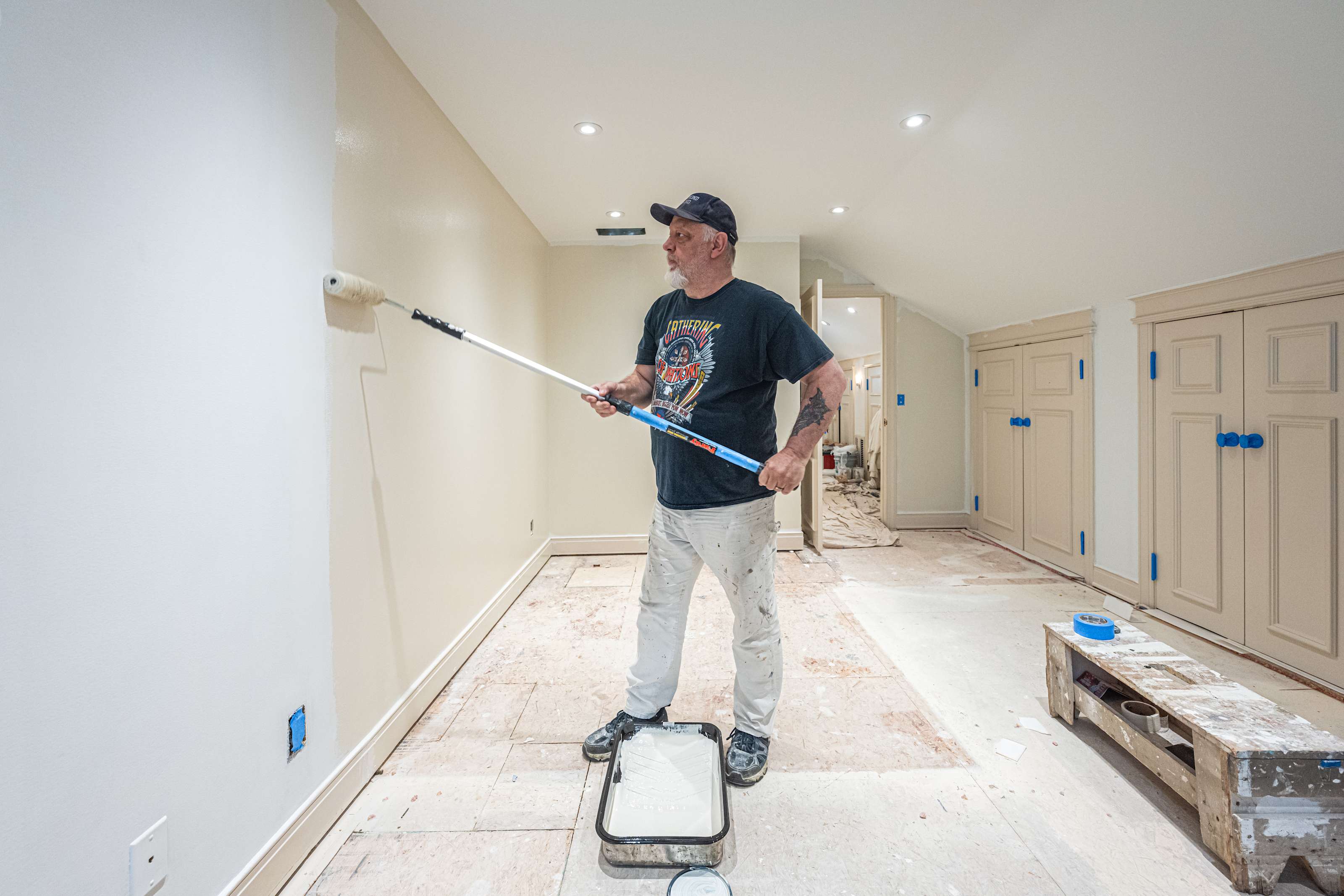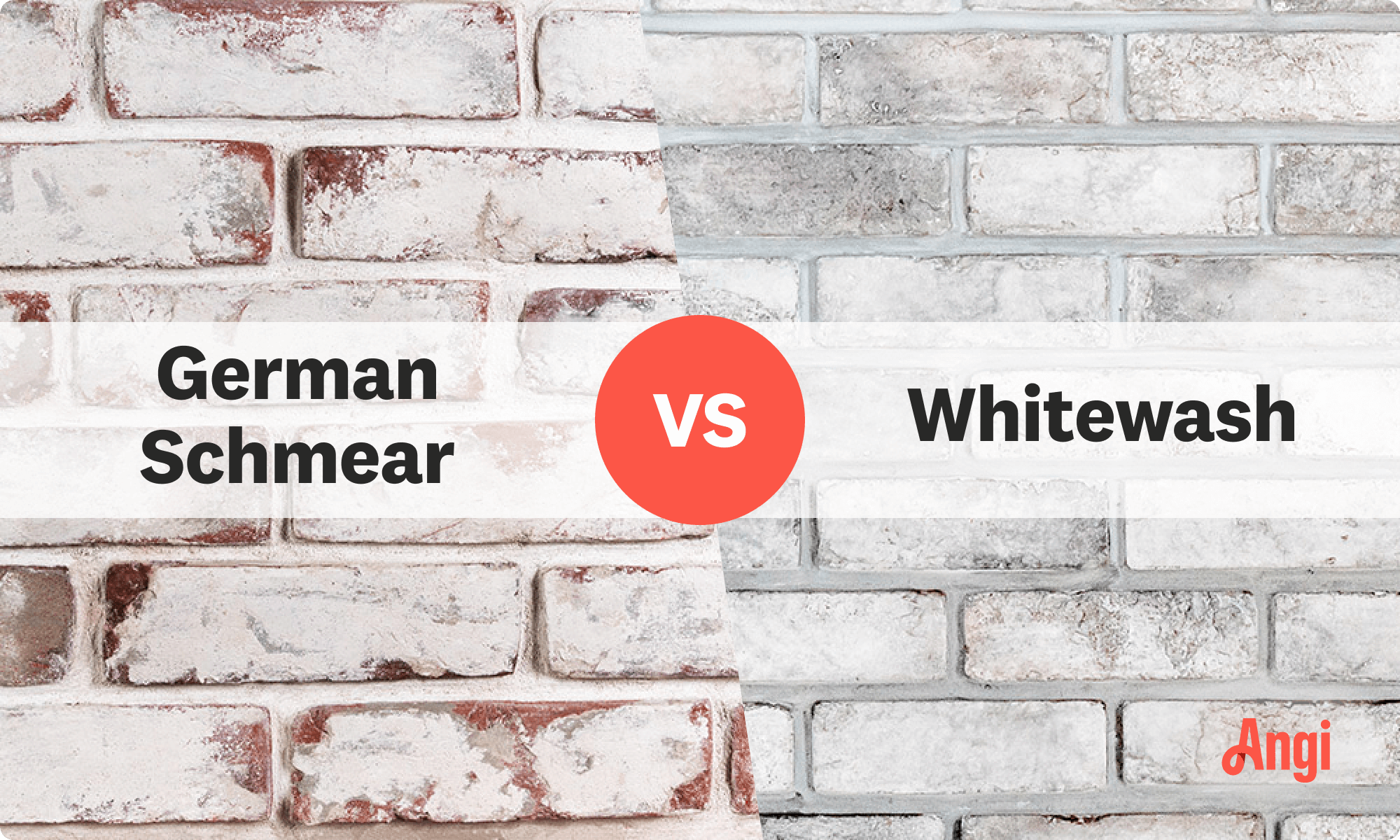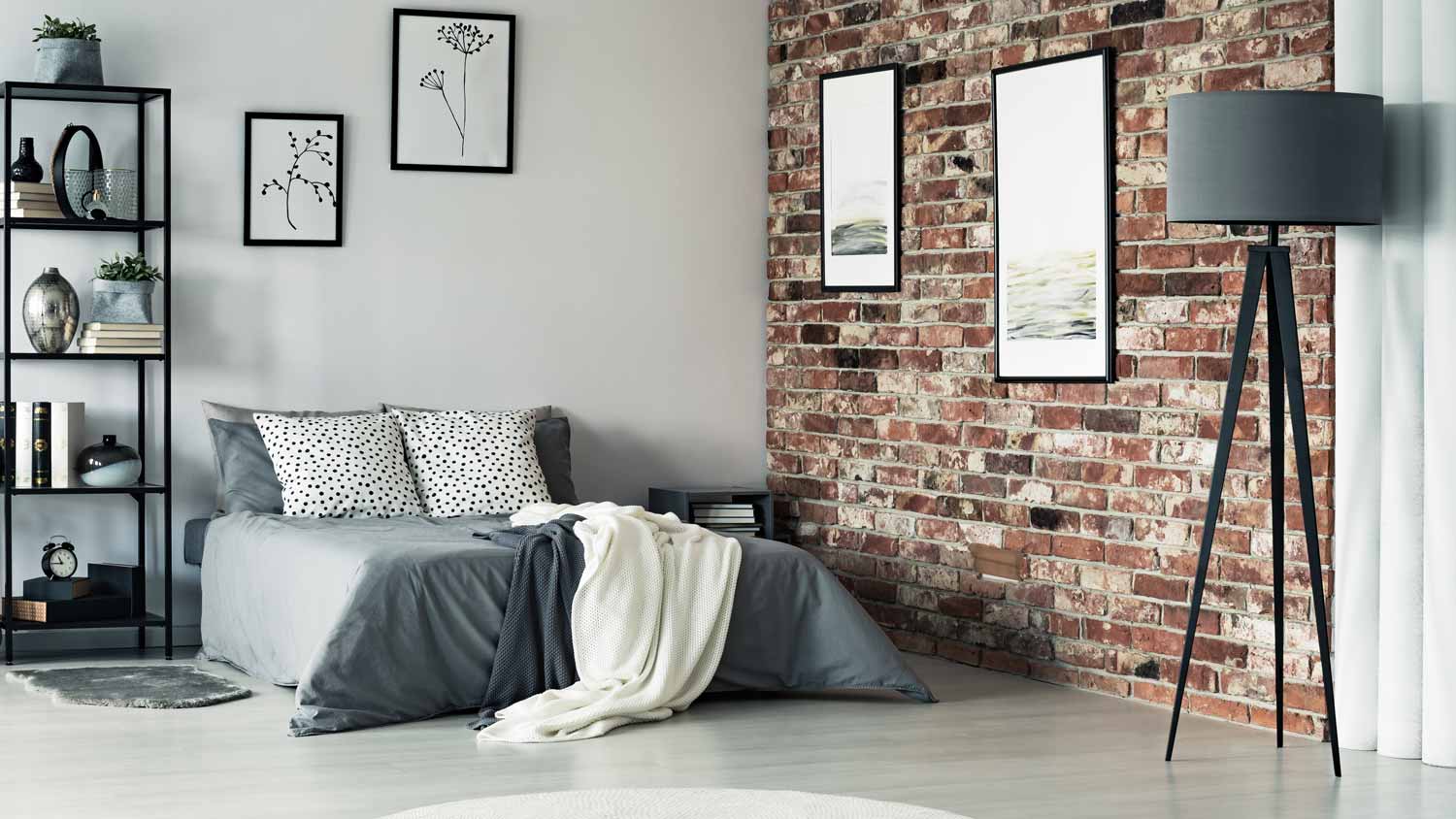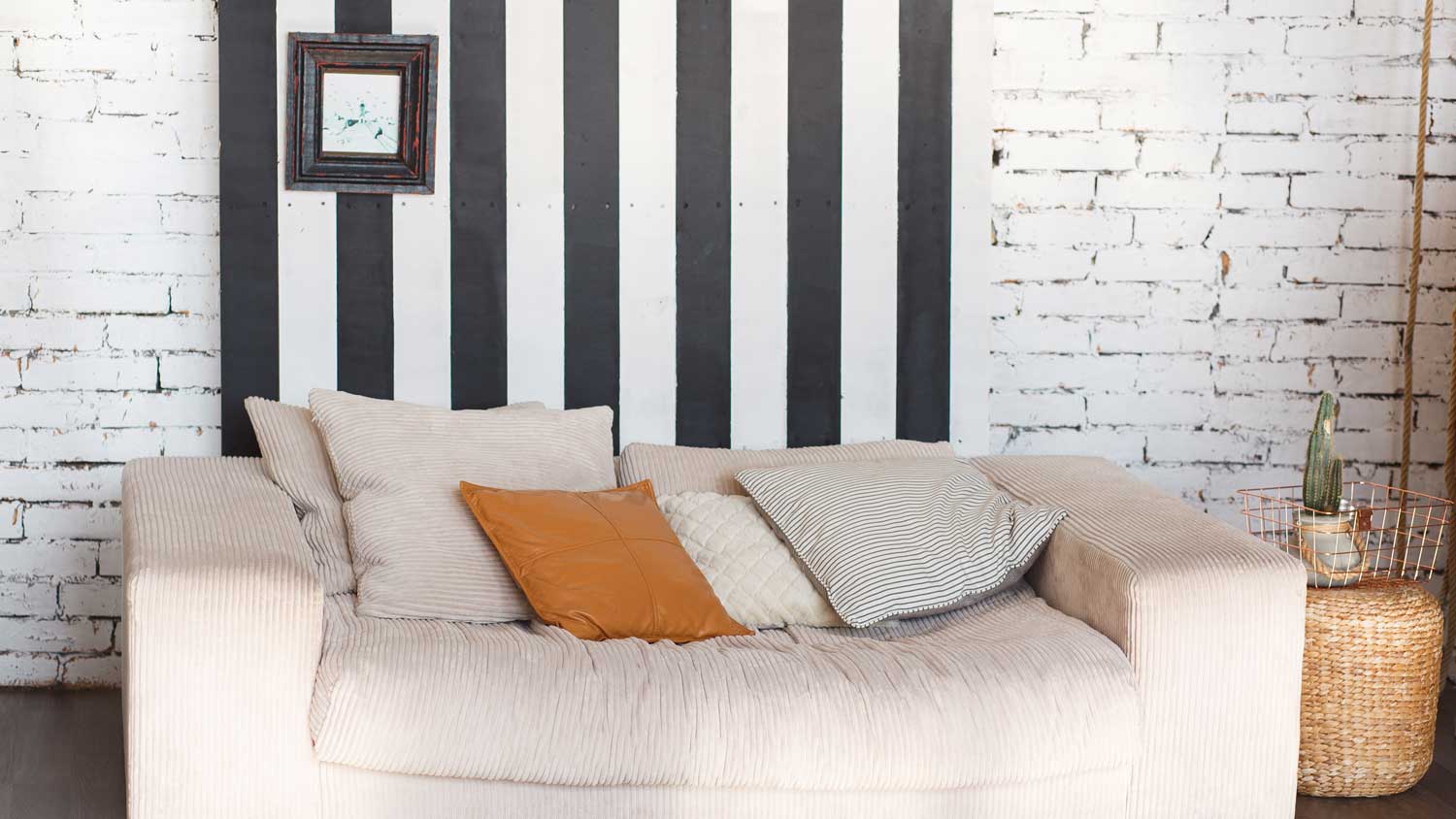
How much does it cost to paint a room? Learn what you’ll pay to give your space a makeover, depending on room size, paint type, the pro you hire, and more.
Know the differences to paint a full picture


German schmear is a permanent application that gives brick a distressed aesthetic.
Whitewash is watered-down paint, while German schmear contains mortar.
Both methods cost around $30 to DIY.
Whitewash is easier to apply, while German schmear is more labor intensive.
Imagine you want a unique look for your brick home but don’t want to cover it with paint. If you’ve been throwing around several ideas for sprucing up your exterior, German schmear and whitewash are two brick painting methods that may have come up in your research. Use this guide to compare German schmear versus whitewash and see which is better for you.

At a quick glance, German schmear and whitewash may seem to be one and the same; however, there are several differences worth keeping in mind. Become an expert in differentiating between the two by checking out a breakdown of German schmear versus whitewash below.
| Type of Difference | German Schmear | Whitewash |
|---|---|---|
| Materials | Mortar, water | Paint, water |
| Appearance | Uneven | Uniform |
| Style | Cottage, Craftsman | Rustic, colonial |
| Application | Difficult | Quick and easy |
| Life span | Virtually forever | 20 – 30 years |
| Cost | $30 | $30 – $45 |
First things first: There are some major differences in the types of materials used to create both brick applications.
German schmear is a combo of 70% mortar and 30% water, which—as you probably guessed—results in a thick, pastelike material. Mortar contains cement, lime, and sand for a tough final product once dry.
Whitewash is a 1:1 to 1:3 ratio of latex paint and water. The more water you add to the water-based paint, the thinner and more transparent the final coating is. If you go for a 1:1 ratio, your paint will have less transparency, but you can also dry brush or splotch the paint for a more distressed appearance.

When debating German schmear versus whitewash for your bricks, the way each one affects the appearance of the brick may be one of the biggest determining factors in which one you end up picking. Here’s how both materials compare.
German schmear comes in white or gray because of its sand and cement composition. Traditionally, whitewash is made from white latex paint and water. Sometimes, however, whitewash contains additives like earthy materials to add subtle hues of off-white, cream, or beige to the appearance of the bricks.
Since whitewash is watered-down paint, individual bricks are fairly uniform in appearance. The watered-down mixture allows for natural brick hues to peek through the white layer without coming off too strongly.
German schmear has a rougher, splotchy texture that makes each brick different from the next one. You can say goodbye to that cookie-cutter house if you opt for a German schmear. This bold texture works really nicely in homes where the brick serves as a feature wall, or it can add major character to exterior brick.
Painters and DIYers traditionally use German schmear in homes with cottage, rustic, farmhouse, Craftsman, or industrial styles. Exposed wood beams are practically calling for this perfect accompaniment. And, thanks to its unique characteristics, you can even use German schmear in modern homes for a blend between modern and natural appearances.
Whitewash, on the other hand, tends to work well with a rustic, colonial, or farmhouse-style abode. Whitewash is less popular in modern homes, as it fades over time, but you can still add another coat of whitewash down the line to brighten things up.

Before you go with either brick technique, you’ll want to know how they compare and contrast in terms of application, life span, maintenance, and removal. The following differences may just affect your decision.
German schmear is more demanding to apply than whitewash. Since whitewash is latex paint mixed with water, it’s fast and easy to whitewash brick without the help of a local painter. Simply roll the liquid across your brick surface for a quick application.
German schmear is 70% mortar, making it much thicker and, therefore, harder to apply. You’ll need more physical labor to spread the mixture, and you’ll also need a trowel or grout sponge. To achieve that thin coating, you must leave only a small amount of the mixture behind, removing any excess solution.
You may need the help of an exterior painter near you for larger surface areas if you plan on applying the German schmear method.
Whitewash is by far easier to remove than German schmear. Mortar is challenging to remove without damaging the underlying brick, whereas whitewash can be removed through chemical stripping or power washing.
If you tend to change your mind over time, German schmear might not be the right brick application for your home. It’s a permanent option that won’t fade over time. This permanence, however, means your bricks are easy to maintain and don’t require regular do-overs.
Whitewash has a life span of 20 to 30 years. During this time, your bricks also require minimal maintenance, though whitewash isn’t as hardy as German schmear. You’ll need to apply more whitewash once the material starts to fade if you want your home to look as good as new.

Both whitewash and German schmear are significantly more affordable than the cost of painting brick. German schmear takes the (German) cake when it comes to overall cost savings if you compare exterior brick finishing prices. You could spend as little as $30 on materials to DIY either project for interior brick, but if you’re whitewashing your home’s exterior, you might spend closer to $45 on average.
Planning small painting and staining projects is fairly straightforward and rarely an urgent need. According to Angi data, 34% of homeowners report that their timing for these projects is flexible, which makes sense considering the scope of the job. About 14% of respondents are okay with completing the project in more than two weeks. Even if you’re not completely sure whether to use German schmear or whitewash, you can still speak to a pro to get advice and plan out your project.
Whether you’re choosing to whitewash or German schmear a surface in your home, make sure you research the technique well enough to know whether you’re ready to tackle it all yourself.
Choosing to DIY will save you a ton of money, and both techniques are accessible for most homeowners. If you can mix the solution correctly and have the patience and muscle power to apply it to your surface properly, you should be all set. That said, if you’re not confident in your painting skills, it’s perfectly reasonable to call in a paint pro who can ensure the job is done quickly and as smoothly as possible (literally).
Allie Ogletree contributed to this article.
Our homes curb appeal skyrocketed thanks to Custom Paint Jobs LLC s exterior painting.
Window Depot did an amazing job on my deck. I wasnt sure what I wanted to do, but their composite decking was affordable and will last a long time. I am excited to have family over, and I am no longer embarrassed by my backyard. Jeff and the ground crew were polite, respectful, and caring for...
AFS was excellent from start to finish. Jess, the sales associate, was fantastic...very knowledgeable and very professional. The installation crew was excellent. I couldn't be more pleased with the process. Best of all, my new floor looks fantastic!
We used Unique Hardwood Floor LLC three years ago to work on the floors of a 70 year old home that needed a great deal of work. Some floors needed repairs, some were replaced and others just needed to be refinished. It was a complicated job as they needed to blend the old and the new to...
We needed them to do extra work to remove existing wallpaper, and provide full primer and painting/trim work around existing furniture etc, during a move-in period. They did everything top-notch with minimal mess. They were always extremely on time, and very professional. They also cleaned...
From average costs to expert advice, get all the answers you need to get your job done.

How much does it cost to paint a room? Learn what you’ll pay to give your space a makeover, depending on room size, paint type, the pro you hire, and more.

The cost to paint the interior of a house in Charlotte, NC depends on size, layout, type of surface, and more. Learn what factors can influence your total in this guide.

The cost to paint the interior of a house in New York, NY depends on size, layout, type of surface, and more. Learn what factors can influence your total in this guide.

Enamel paint is known for its glossy finish, making it a popular paint type for use on many different types of surfaces both indoors and outdoors. We break down all of its pros, cons, and common uses so you can see if it’s right for your project.

Sick of staring at popcorn walls or faux stucco? This guide will show you how to remove texture from walls like a pro. Here’s what you need to know.

If your home has windows galore, you’ll want to pick a color scheme that plays to that advantage. Use these paint colors for rooms with lots of natural light.